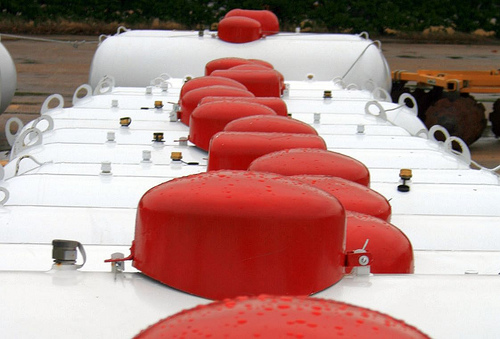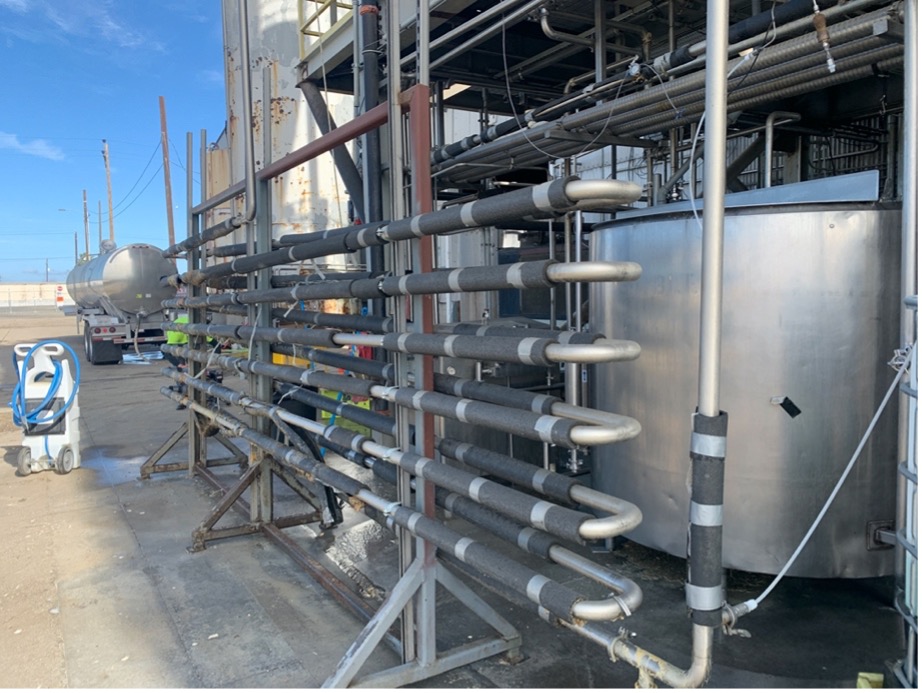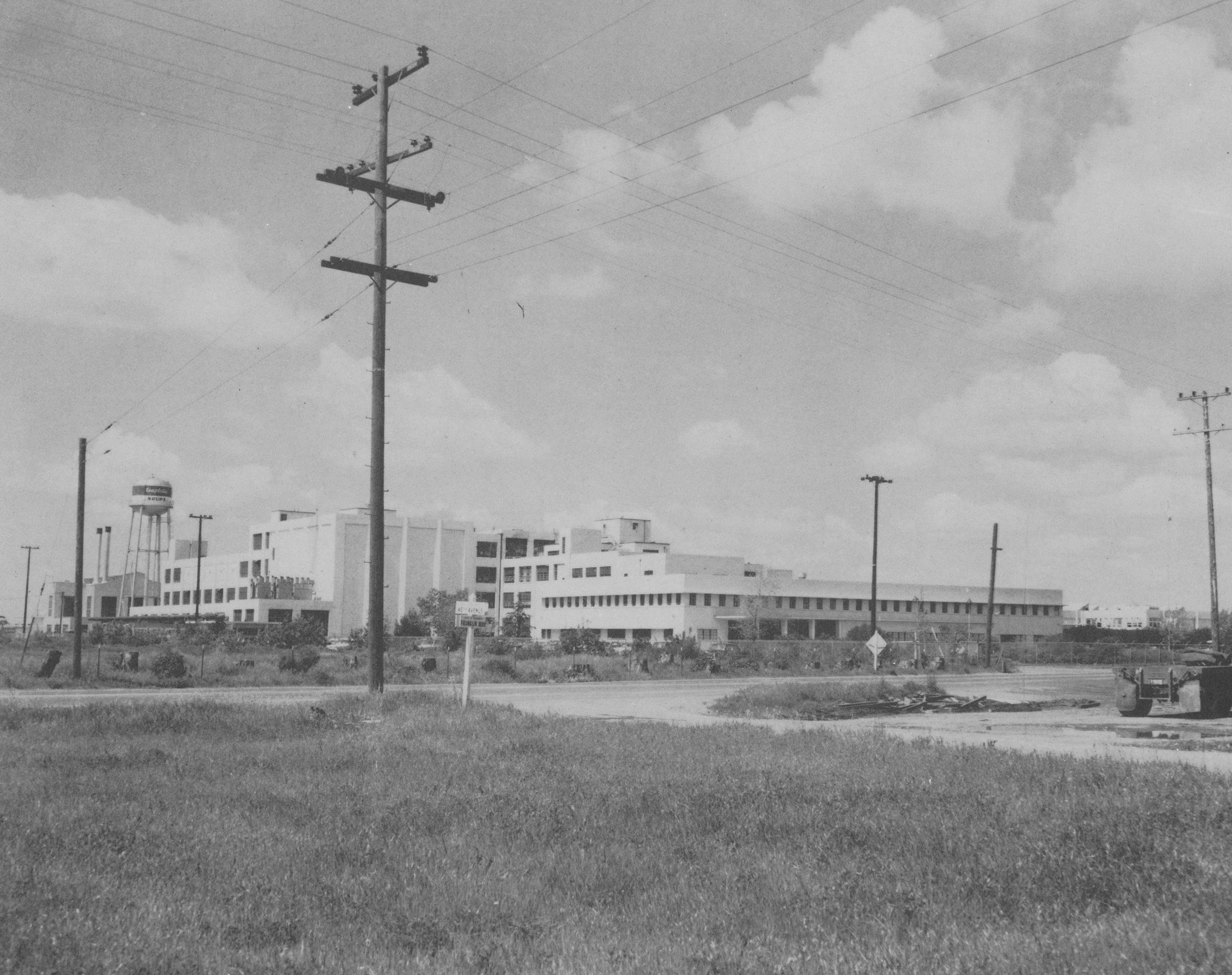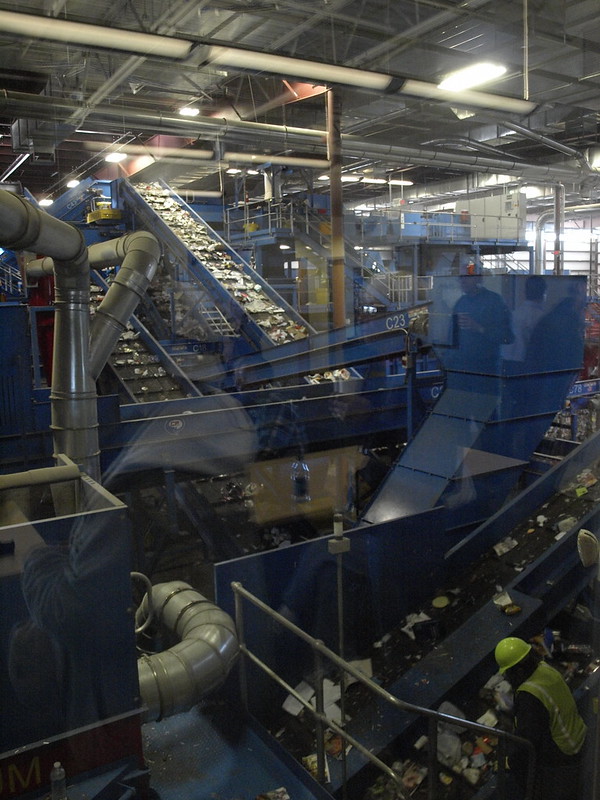 Whether retail propane companies need an equipment appraised for collateral lending situations, buy-sell agreements, family law, estate tax or any other reason, the equipment appraiser needs to take a good look at not only the basic equipment of the retail propane industry — trucks and trailers, customer tanks, and large volume storage tanks — but also the industry itself. In the last two posts, we covered recent changes in the retail propane industry and considered the influence of those changes on the value of delivery trucks and tanks. In this last post, we’ll finish up with a discussion about the other tanks in the retail propane delivery industry: customer propane tanks and the large, on-site propane storage tanks.
Whether retail propane companies need an equipment appraised for collateral lending situations, buy-sell agreements, family law, estate tax or any other reason, the equipment appraiser needs to take a good look at not only the basic equipment of the retail propane industry — trucks and trailers, customer tanks, and large volume storage tanks — but also the industry itself. In the last two posts, we covered recent changes in the retail propane industry and considered the influence of those changes on the value of delivery trucks and tanks. In this last post, we’ll finish up with a discussion about the other tanks in the retail propane delivery industry: customer propane tanks and the large, on-site propane storage tanks.
Customer Propane Tanks
The customer tank database of a propane company will typically list date of manufacture, manufacturer, serial number, size, location, and the tank’s condition. Notes on the tank’s condition primarily indicate whether or not a tank is operational within accepted guidelines and industry regulations. Customer propane tanks, as one would logically conclude, are highly regulated at the federal, state and local levels. This regulation, in combination with the long Normal Useful Life of customer propane tanks, means that a propane retailer is likely to have a large number of older tanks that still meet government regulations and continue to be in operation.
Because it is not possible to inspect every tank, the propane tank valuation process will typically rely upon management data as to the location, size, condition and age of the tanks, while also conducting procedures to gain a understanding of the general condition of the customer tanks in relation to management’s assertion. To assess validity of management data, the appraiser may want to inspect a haphazard sample of customer tanks on-site and at customer locations and will certainly want to determine if the subject company has an active program of refurbishing tanks.
Customer tanks are frequently taken out of service temporarily to be refurbished. This process involves sandblasting, repainting and refitting with new valves. In the maintenance yards, therefore, an equipment appraiser would expect to see new tanks, recently refurbished customer tanks, tanks waiting to be refurbished, and a wide range of tank conditions between these two extremes. Tanks are also routinely cleaned, primed and painted at customer locations.
Of course, no matter how well maintained or frequently refurbished, may older customer tanks may have no trade value. Industry experts agree that many tanks older than 45 years, as well as tanks with less capacity than 120 gallons, may have no resale value. While these older and smaller tanks are of no trade value, they are in use and therefore of value to the retail propane company. To reflect this, these particular tanks may be assigned a scrap value consistent with the value of their material content.
Customer tanks in use also have the value of already being installed. The appraiser may want to conduct interviews with company staff to determine the direct variable cost of installing a tank at a customer location and do an age life analysis of those costs consistent with the length of time the average tank is at a customer location.
During on-site inspections, the appraiser will likely encounter tanks that do not meet government regulations. Although the steel in these tanks may appear to have some scrap metal value, these tanks can represent a dangerous disposal problem as flammable components from the propane permeate the steel during prolonged use. These tanks can be removed by companies with the necessary permits; some companies charge to remove scrap tanks and other companies remove the scrap tanks for no charge, but it is unlikely that any company would buy these tanks. Therefore the “scrap” tanks not in use have no value and may even represent a liability.
Storage Tanks
Valuing propane storage tanks may be the simplest factor in the propane equipment valuation puzzle. Because large volume storage tanks themselves have no moving parts, they have a relatively long Normal Useful Life. The moving parts to be considered, such as valves and pumps, are maintained and replaced regularly due to the governmental regulations regarding propane tanks in general. Nationally, the prices for propane storage tanks and the related installation are fairly consistent. It is important, however, to distinguish between operational and non-operational tanks. In instances where not all storage tanks owned by a propane company are in operation, the tanks not in operation would have a lower “In-Use” value to reflect costs that must be incurred to make the tanks operational.
Due to the large volume of customer tanks, storage tanks and delivery vehicles often owned by propane delivery companies, it is often necessary to consider absorption when determining respective values. Absorption is essentially an effect of the basic economic law of supply and demand which states that the greater the supply and the lower the demand, the lower the price will be. When considering absorption in equipment valuation, an appraiser takes into account the length of time needed for the assets to be absorbed by the current market at what price. Because the value of customer propane tanks is very price / volume sensitive, it’s important to remember that the base price for valuing used customer tanks assumes a small number of tanks changing hands. Therefore, if a particular appraisal involves the assumption of a bulk purchase of the underlying assets that is large by industry standards the result would be a material reduction in value for those assets.
Conclusion
When approaching a value for equipment related to the retail propane delivery industry, an equipment appraiser will do well to consider all of factors that can influence the equipments value — from the current state of the retail propane industry, with the increasing trends toward efficiency and consolidation, to the possible consideration of absorption as a market response. Of course, the purpose of the appraisal, and the level of trade most appropriate for the appraisal’s use — along with any information collected during the inspection and research process — will also influence the equipment appraiser’s conclusion of his or her opinion of value.




